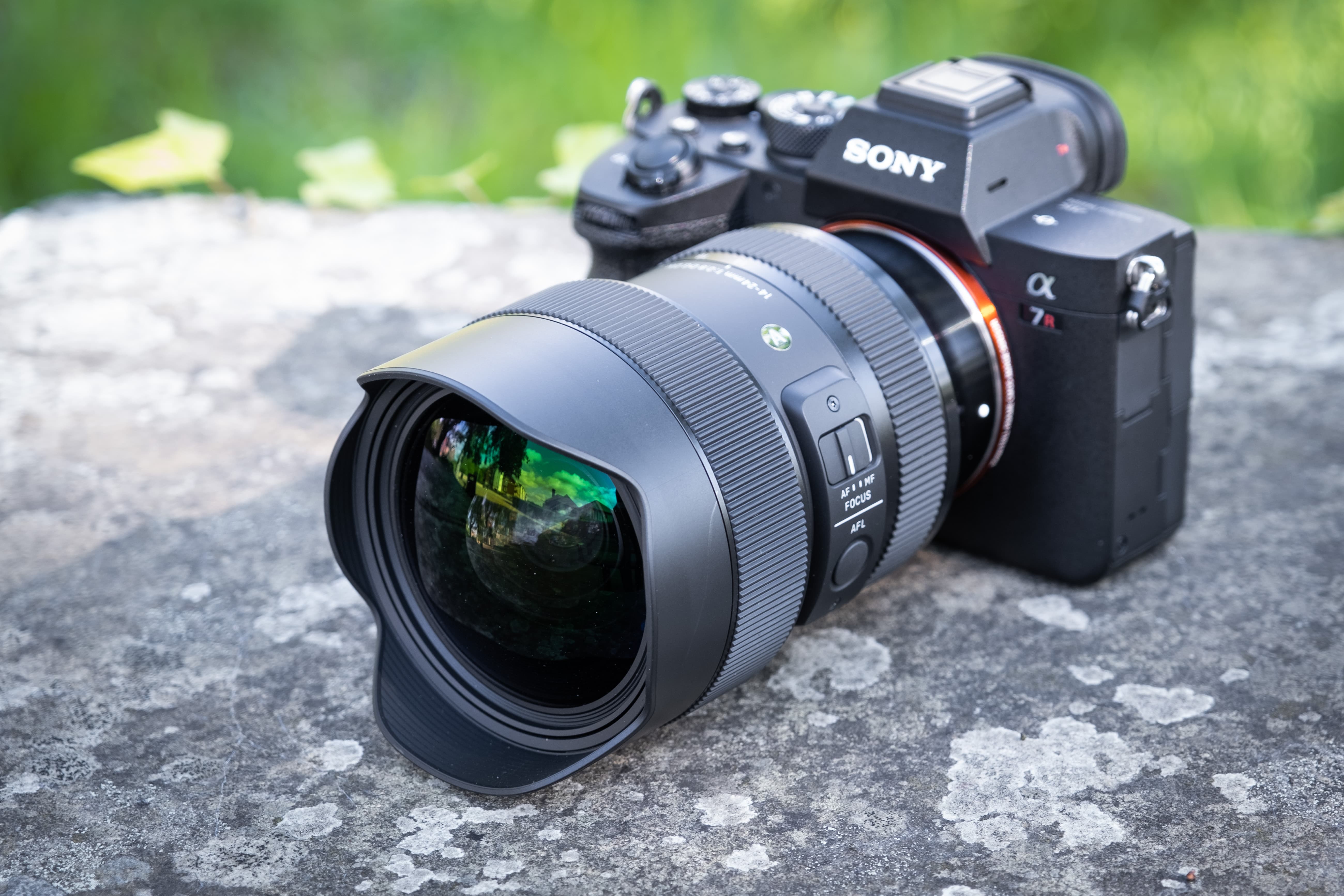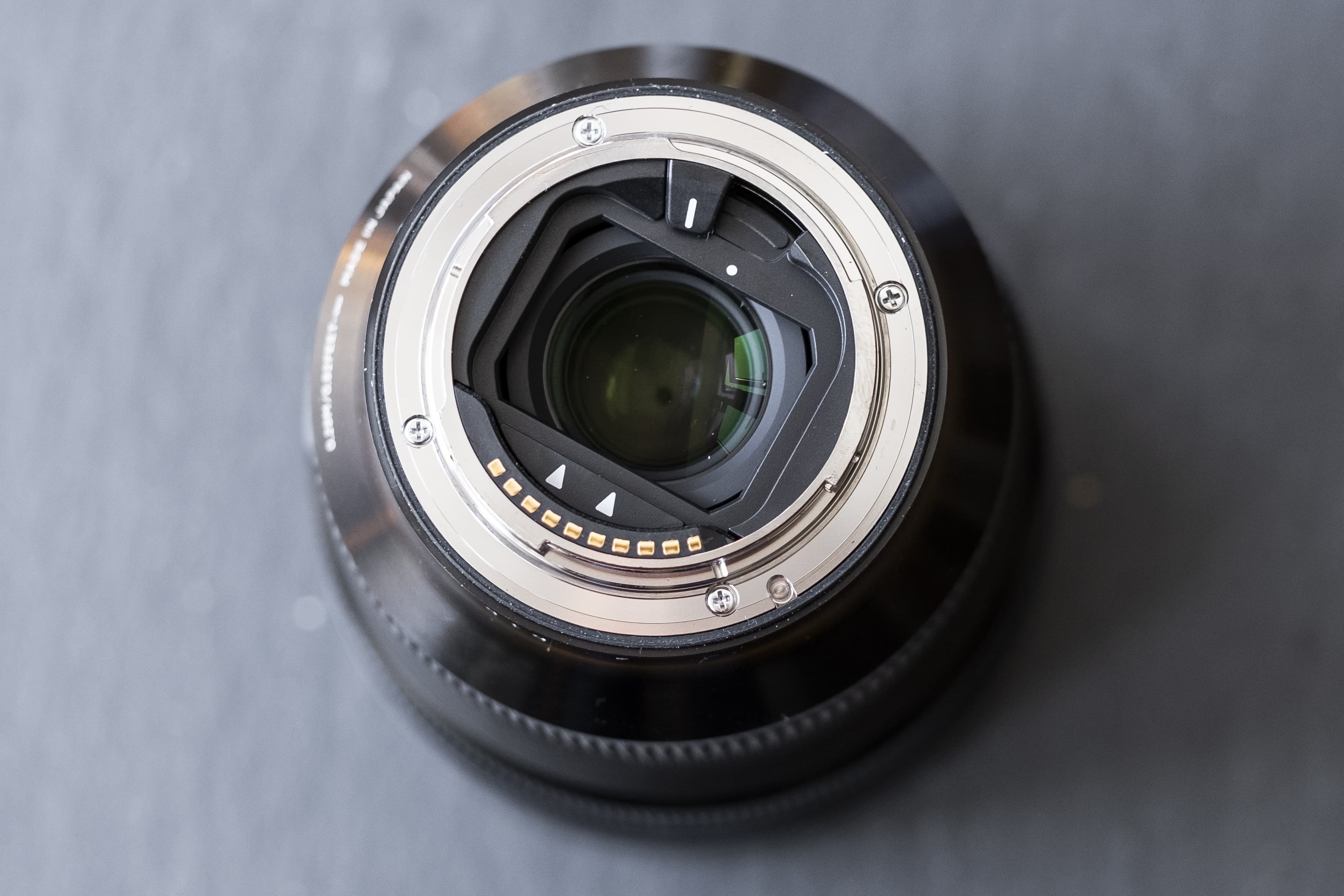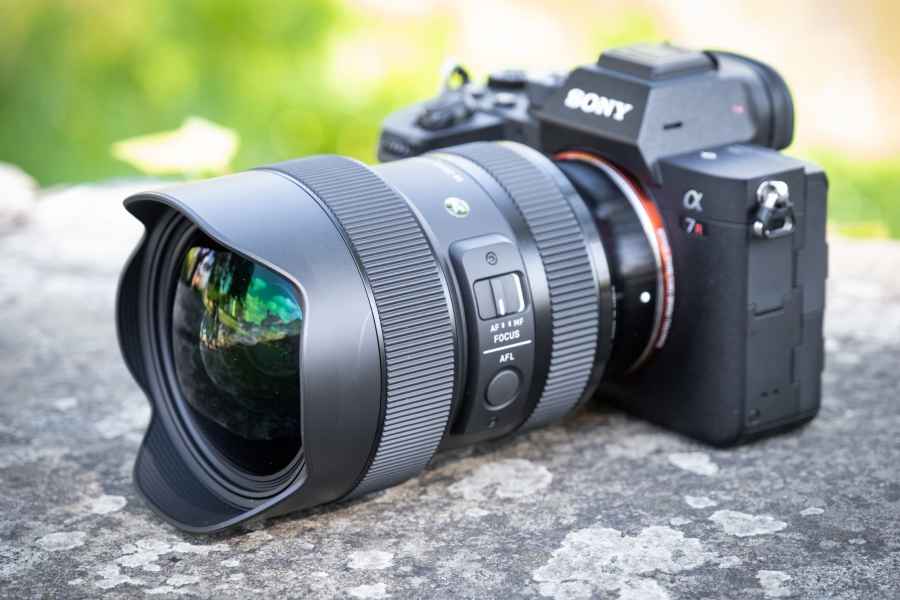Sigma 14-24mm F2.8 DG DN review: Introduction
Not to be confused with the Sigma 14-24mm F2.8 DG HSM that was released in 2018, the Sigma 14-24mm F2.8 DG DN is a new wide-angle zoom that has been specially developed and optimized for today’s high-resolution full-frame mirrorless cameras.
Whereas the 14-24mm F2.8 DG HSM (£1129) is available in Canon EF, Nikon F and Sigma lens mounts; the lens we’re looking at in this review is made for mirrorless cameras that use the E-mount or L-mount. In an interesting Q&A session published on Sigma’s YouTube channel in February, CEO of Sigma Corporation, Mr Kazuto Yamaki confirmed no decision has yet been made as to whether Sigma will make mirrorless lenses for the Nikon Z mount and Canon RF mount.

The Sigma 14-24mm F2.8 DG DN coupled to the Sony A7R IV
Getting back to the lens in question, the Sigma 14-24mm F2.8 DG DN is very appealing in terms of what it offers for the price. For landscape and astronomy photography in particular, it lets you squeeze more of your surroundings in the frame than lenses like the Panasonic Lumix S Pro 16-35mm f/4 (£1499) and Sony FE 16-35mm f2.8 G Master (£1995), which are £200 and £695 more expensive respectively.
Sony does produce a lens of similar focal length – the FE 12-24mm f4 G, but this is also more expensive and doesn’t provide as fast maximum aperture throughout its zoom range like its Sigma rival.
On paper it seems Sigma has created a strong product at an excellent price point where there is an obvious gap in the market. As we all know though, a lens is only as good as the optical performance it puts in. With the mighty Sony A7R IV in my possession I took the opportunity to find out if the lens is a match with today’s highest resolution full-frame mirrorless camera.
Sigma 14-24mm F2.8 DG DN review: Made for mirrorless
It’s natural to assume that being a mirrorless lens, it’s smaller and lighter than many existing wide-angle zooms of the same focal length, which it is. Compared to the Sigma 14-24mm F2.8 DG HSM, which is a brute of a lens, this zoom has a noticeably thinner barrel that’s 4mm shorter in overall length.

Our review sample of the lens was supplied in Sony E-mount fit
There’s a substantial weight saving to be made too. Unlike its wide-angle SLR sibling that weighs over a kilogram, this lens is 355g lighter, which can make a big difference in helping to keep your bag light and manageable on long walks to remote locations.
The weight saving is actually rather surprising given it has more elements in a greater number of groups. Whereas the Sigma 14-24mm F2.8 DG HSM is made up of 17 elements in 11 groups, this lens features a construction of 18 elements in 13 groups. Included within this construction are five special low-dispersion (SLD) glass elements and one ‘F’ low-dispersion (FLD) glass element. This low-dispersion glass is used to curtail chromatic aberration, which is known for being problematic in large-aperture ultra-wide angle lenses, especially towards the edge of the frame.

A fixed petal-shaped plastic hood helps protect the bulbous front element
To prevent flare and ghosting when shooting towards the light, Sigma has combined its Super Multi-Layer Coatings with a new Nano Porous Coating. The idea behind this is that the porous silica layer has nano-sized holes with air inside. Having holes of this size enables a large reduction in the refractive index, allowing the reflectance to be lowered more than conventional anti-reflective coatings. As a result, Sigma claims any reflected light that can cause flare and ghosting is greatly reduced, thus achieving sharp and high contrast images even in back light conditions.

The white background behind the AF/MF switch is a good visual aid for checking where the switch is set in low-light or at night
Complimenting the complex construction is a 11-blade rounded aperture diaphragm which can be set between a maximum aperture of f/2.8 and a minimum aperture of f/22. As for autofocus, the lens relies on a stepping motor to keep the AF drive fast and silent. You even get a focus lock button on the barrel below the AF/MF switch than can setup from the camera’s menu to perform different functions.
The bulbous front element does extend slightly when the zoom is retracted from 24mm to 14mm, but the fixed petal-shaped hood does a fine job of shielding it. I’ll touch on how the lens is used with filters in more detail shortly, but a glance at the rear reveals it’s equipped with a rear filter holder and robust metal mount.

The lens accepts rear-mounted filters and features a locking mechanism to keep them secure
Elsewhere it supports full-time manual focusing that allows users to adjust the focus manually at any time without the need to flick the AF/MF switch to manual first and it can focus within 28cm of a subject.
The lens is supplied with three accessories in the box – a padded case, rear cap and a push-on lens cap cover that uses felt lining on the inside to create a tight, secure fit.
Sigma 14-24mm F2.8 DG DN review: Build quality
The lens falls into Sigma’s premium Art line. Sigma lenses that embellish the letter ‘A’ in a silver circle on the barrel have gained an excellent reputation for having a first-class finish and robust build quality. The same is true of this lens.

Sigma’s Art lenses feature the letter ‘A’ on the barrel. They’re known for their fast apertures and impressive optics
Though it may be a third-party option and be considerably cheaper than main brand rivals you can’t fail to be impressed by how well made it is. The construction of the barrel is a blend of precision-engineered metal and smooth matte black polycarbonate plastic, with rubberised zoom and focus rings offering excellent control when your hands might be wet or you’re wearing gloves.
The zoom ring has a short throw, operating very smoothly across the zoom range in just under a quarter turn. The focus ring doesn’t have hard end stops and is electronically rather than mechanically coupled, but operates super smoothly and combined brilliantly with the automated manual focus magnification on the A7R IV to quickly establish pin-sharp focus.

The focus ring is larger in diameter than the zoom ring. No focus distance window is present
Having good weather resistance is extremely important on a lens that’s likely to see a lot of use outdoors. The dust-and splash-proof structure features seals at seven strategic points in its construction, including a rubber seal around the metal mount that compresses against the mount on the camera when it’s attached. The autofocus lock (AFL) button is weather sealed too.
As mentioned earlier, the lens comes with a rear filter holder and locking mechanism so sheet-type rear filters can be used. If you’d prefer to use filters that don’t require you to remove the lens, it can be with more conventional filters from the front too, though you will need a specially designed ultra-wide angle system such as the LEE Filters SW150 Mark II.

A close up showing the metal section of the barrel closest to the lens mount
At present a custom adapter hasn’t been made by LEE Filters for this lens, but we expect one will be made available in the future. One filter manufacturer that currently offers filter support for the lens is NiSi. Their adapter isn’t cheap (£125), but does works with the company’s S5 filter system, which can hold up to two 150mm filters as well as an integrated circular polariser.
Sigma 14-24mm F2.8 DG DN review: Performance
With strict social distancing measures and non-essential journeys curtailing my plans to use the lens at the coast, it was tested much closer to home on walks as part of my daily exercise.
Inspecting images at different zoom settings across the aperture range with in-camera corrections for shading, chromatic aberration and distortion set to auto revealed that image quality is excellent. The level of sharpness at the edges of the frame at the widest point in the zoom range doesn’t match that in the centre at f/2.8, however users will notice corners are quick to sharpen up by stopping down to f/4.

Sony A7R IV, Sigma 14-24mm F2.8 DG DN @ 15mm, 1/100sec at f/11, ISO 200
For the best edge to edge sharpness at the long end of the zoom (24mm) users are recommended to stop down from the maximum aperture to around f/5.6, which I identified to be close to the lens’ sweet spot at any given focal length. Diffraction starts to soften detail when aperture settings of f/16 and f/22 are used, so it’s best to use the lens between f/4 and f/11 if you want to be rewarded with the sharpest images.

Sony A7R IV, Sigma 14-24mm F2.8 DG DN @ 14mm, 1/125sec at f/5.6, ISO 200
The in-camera lens compensation that’s automatically applied plays a very important role. There’s no reason to ever turn this off, but if you do you should be prepared to witness chromatic aberration creeping into images.

Sony A7R IV, Sigma 14-24mm F2.8 DG DN @ 14mm, 1/400sec at f/2.8, ISO 100
Shading compensation is effective at reducing vignetting at the long end of the zoom when the lens is used at f/2.8, however it doesn’t remove it completely when the lens is used between 14mm to 18mm where some manual correction is required. Stop down to f/4 and f/5.6 from f/2.8 and you’ll notice that corner shading subsides. Shooting towards the light also revealed the new Nano Porous Coating does a fine job of reducing ghosting and flare as illustrated in the image below.

Sony A7R IV, Sigma 14-24mm F2.8 DG DN @ 16mm, 1/5000sec at f/2.8, ISO 400
With regard to distortion, it should be noted that the lens does exhibit barrel distortion when used in the region of 14-16mm, even with distortion compensation applied. Some of my widest shots did require some manual distortion correction in Photoshop. Though admittedly it doesn’t handle curvilinear distortion quite as well as the Sigma 14-24mm F2.8 DG HSM at the wide end, distortion at longer focal lengths is negligible.
Sigma 14-24mm F2.8 DG DN review: Verdict
Sigma has always been quick to acknowledge gaps in the market where important lenses are missing. Up until recently, full-frame E-mount and L-mount users have been rather limited by the selection of wide-angle zooms available to them; in particular the number of super wide zooms with a fast maximum aperture.
For those who’d like to have the option of shooting wider than the Panasonic Lumix S Pro 16-35mm f/4 and Sony FE 16-35mm f2.8 G Master allow, the Sigma 14-24mm f2.8 DG DN Art is seriously tempting and represents superb value for money.

For Sigma to call it the ultimate large-diameter, wide-angle zoom lens for full-frame mirrorless cameras was a bold claim, but having tested it extensively with the highest resolution mirrorless camera on the market, I can confirm that it is at the time of writing.
Constructed to a highly robust, weather sealed standard with quiet and accurate focusing, there’s very little not to like about this lens if you’re into landscape, architectural or astro photography. The fact it doesn’t accept screw-in filters will make it more expensive if you don’t already own a large filter system, but if you do, your only expense is likely to be a new adapter ring.
Photographers who prefer shooting wider than they do faster may find themselves holding out for a mirrorless version of the Sigma 12-24mm F4 DG HSM, but how long before this arrives for E-mount and L-mount is unknown. If you can see an extra stop in speed being beneficial in low-light and 14mm is wide enough, look no further than the Sigma 14-24mm F2.8 DG DN.
To summarise, this is currently the finest example of a wide-angle zoom we’ve tested for full-frame mirrorless cameras at sensible money.








